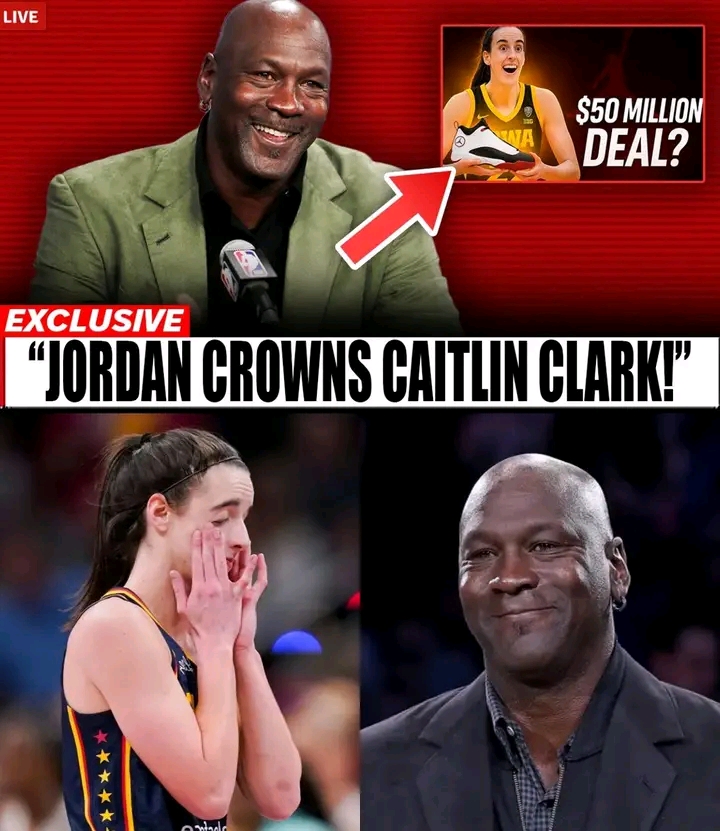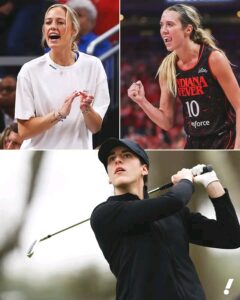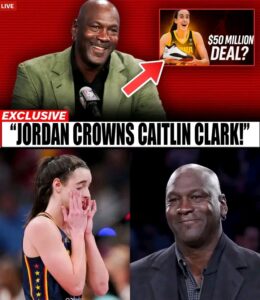
The $50 Million Civil War: How Caitlin Clark Started a Brand Battle, Astonished the WNBA, and Started as Jordan BB’s New Face – News
It started as a whisper, the kind of shudder that starts online in the dark, anonymous corners of a sneaker forum. “Jumpman X Caitlin Clark” was one moderator who claimed to have seen internal marketing slides. International Collaboration. $50 million.
It was unbelievable at first. But in the modern age, disbelief is short-lived. Screenshots showed up. The volume of tweets increased dramatically. Bored with the mid-season slump, sports talk shows had their next big storyline all of a sudden. Will Caitlin Clark sign the largest contract in women’s basketball history with Jordan Brand? This question was fascinating.
If it’s accurate, this wasn’t simply another sponsorship. It was a cultural earthquake.
A maximum resolution YouTube thumbnail Executives at Nike and its subsidiary, Jordan Brand, were frantically working within hours, according to industry insiders. Agents were taking desperate calls. And according to reports, Steve Simon, the owner of the Fever, was in Indiana, watching history happen more quickly than he could possibly respond. With Caitlin Clark as the target, the $50 million rumor was more than just a rumor; it was a declaration of war—a “friendly civil war” inside Nike.
This is the tale of a 23-year-old Iowan who, in just one rookie season, rose to such prominence that she scared the front office of her own team, made a corporate empire compete with itself, and radically altered the financial model for all female athletes worldwide.
You must comprehend the old deal in order to comprehend the explosion. Caitlin Clark signed an eight-year, $28 million contract with Nike prior to her first professional game, which at the time was regarded as a huge deal. Her historic college career was validated. However, that $28 million suddenly seemed like a robbery following a rookie WNBA season that broke every viewership record imaginable, sold out arenas, and made Indiana Fever merchandise a top seller.
The league grew vertically rather than steadily. All of this was taking place on Clark’s shoulders. “41 of their 44 games [are] nationally televised, while the reigning champs, the Liberty, only have 32,” one analyst observed. Her market value was rapidly surpassing her contract, and the machine was completely behind her.
Enter Jordan Brand
The Jumpman logo has been the unchallenged pinnacle of men’s basketball style for decades. Tatum, Luka, Zion, and Michael—a Mount Rushmore of symbols. However, the brand has had trouble finding its transcendent star in the women’s market. According to reports, Jordan’s women’s line accounts for less than 15% of its yearly sales, even though it signed amazing talent like Maya Moore and N’Fisa Collier.
Jordan Brand generates hype rather than chasing it. And it realized that in order to transform its women’s division, it needed a single person who could sell sneakers to people who weren’t sneakerheads—someone who could move between cultures as effortlessly as she moves defenders.
They required Caitlin Clark
The media storm is hurting Caitlin Clark. r/wnba The proposed $50 million, ten-year plan is a coronation, not just a paycheck. Industry rumors state that the agreement includes co-branding on clothing, her own signature line of lifestyle and performance sneakers, and—above all—equity participation in Jordan Brand’s women’s initiatives. This type of agreement is similar to what Luka Dončić or Zion Williamson got. A woman would be seated at the same financial table for the first time.
However, the narrative—rather than the money—is the most effective component of the strategy. Jordan executives allegedly created a “Be Like Her” campaign outline behind closed doors. The idea is a clear and clever homage to the famous “Be Like Mike” advertisements that shaped a generation. However, it’s reframed this time.
Images of college athletes putting on “Clark Ones,” young girls leaping from the logo, and a message of bravery and ingenuity. The transition from imitation to inspiration is symbolic. Be your own legend instead of trying to “be like Mike.” The myth-making experts Jordan Brand understood that every generation requires its own icon. Caitlin Clark could define the future; Michael defined the past.

The front offices were in a panic while sneakerheads were having a good time. Steve Simon was allegedly “pacing” back in Indiana. The Fever became the league’s most valuable asset after Clark’s name alone doubled merchandise sales and sold out season tickets. However, the player’s identity was outgrowing the team’s, and this deal brought with it a terrifying new reality.
When LeBron James founded his own business, NBA owners experienced the same anxiety. Simon reportedly met with league executives to talk about “commercial independence,” which is business speak for “how do we keep up when our star player becomes a global CEO?” According to insiders, he was “frightened by the imbalance, thrilled by the exposure.” If Caitlin’s brand surpasses the Fever’s, she becomes the unofficial commissioner of attention for the WNBA.
The dressing rooms of the league were also impacted. In player group conversations, “side eye” and fire emojis were frequently used. While younger players hailed it as inspiration—proof that women’s basketball now had clout—some veterans quietly questioned how one player could fetch more endorsement money than the combined wages of whole teams.
Then there was Nike.
According to reports, “emergency meetings” were called in Beaverton as a result of the rumor of Jordan’s offer. “How do we keep her?” was the straightforward question. Renegotiating her current contract, offering her own sub-brand, or even promising an earlier signature shoe were among her options. But you could feel the panic. A distinct mystique is provided by Jordan Brand. It is personal as well as corporate. It’s a tale of excellence and rebellion. Every young athlete, male or female, would have a different perspective on their options if their star asset, Clark, defected, even to a brand they technically own.
Michael Jordan The deal is about recognition more than money. It has to do with equal shelf space. According to leaks, the Clark line would be displayed on store shelves alongside the LeBron James, Kobe, and Jordans rather than in a distinct, secondary “women’s section.” Perhaps the most revolutionary aspect of all is that small adjustment—equal space.
According to reports, Steve Simon, the shocked team owner, had a silent epiphany during a board meeting as the chaos raged. He allegedly stated, “We don’t lose her if she signs it.” The world is ours. He is correct. Owners used to worry about losing control, but now they realize that everyone benefits from Caitlin’s success. When her profile rises, so does the demand for Fever tickets, the league’s sponsorship rates, and even the WNBA’s upcoming TV deal.

Naturally, Caitlin’s team has kept quiet and allowed the brands to battle it out. They chase her, not the other way around. All the cards are now in her hands. She would be the first woman to break through the $50 million sneaker barrier if she accepted Jordan’s offer. She sets the standard for everyone who follows her by forcing Nike to match it if she stays with them.
In either case, she prevails. The reality is that Caitlin Clark has already altered the women’s sports industry’s financial landscape, regardless of whether the $50 million deal is still on paper or is only being discussed in frantic whispers. It says volumes about her that a rumor about her has the power to dominate the news, move markets, and start a brand war. She is no longer merely a character in the game. The game revolves around her.





